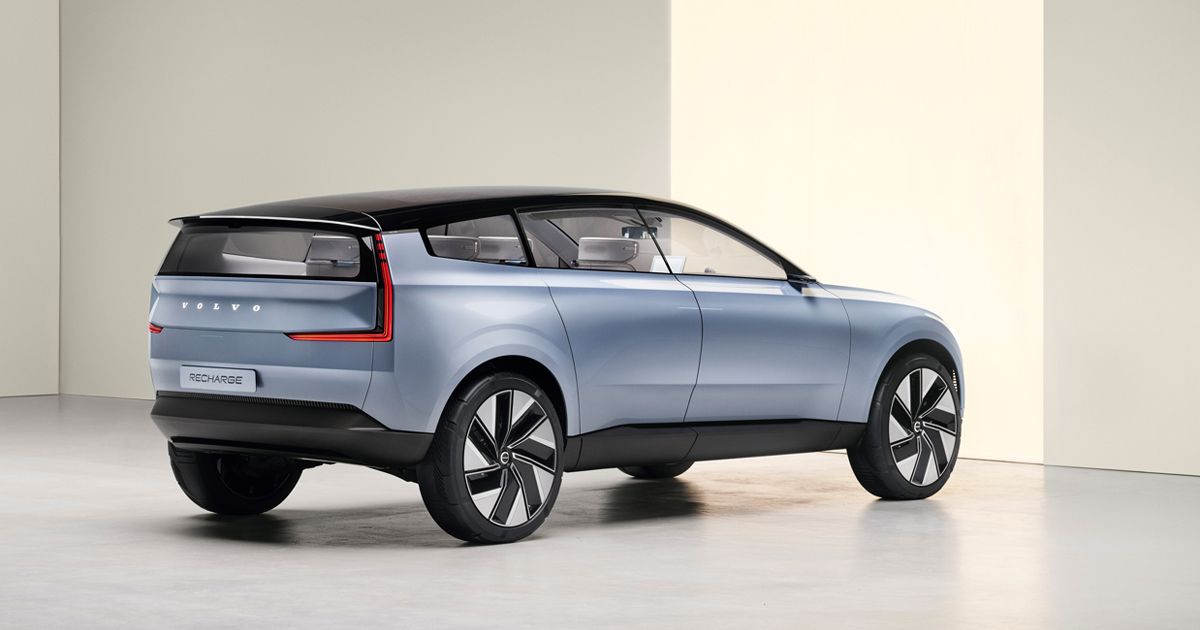
Volvo Cars declared last year that it will be an all-electric brand by 2030. And last week in Miami, the automaker told its dealers how it plans to get there.
The way forward? For starters, seven new and redesigned electrified models over the next few years, including five battery-electric vehicles and two plug-in hybrids.
The new-vehicle onslaught will begin rolling out as early as next year, the Swedish automaker told a closed-door audience of about 800 retailers from across North and South America, according to people who attended the event and asked not to be identified.
To pull it off, Volvo will begin ramping up plans to build more vehicles at its U.S. plant in Ridgeville, S.C., hiring more workers and introducing new models there.
“Volvo is one of the most exciting manufacturers,” a dealer said after the meeting. It is “nailing” the product mix with a focus on crossovers, electrification and technology, the source said.
A Volvo spokesman did not confirm the information provided to Automotive News and declined to discuss future products.
While the industry globally is evolving toward electrification, Volvo wants to get up to speed like an EV does — quickly.
The five new battery-electric vehicles it revealed last week include both a large and a small crossover, a sedan, and two sporty wagon-like models that Volvo executives referred to as “activity vehicles,” according to the people who attended the meeting.
The automaker also showed dealers redesigned versions of its S90 and XC90 plug-in hybrids. Volvo further charged up retailers with a forecast that should have significant profit ramifications for Volvo stores: The manufacturer said the new vehicle line will help retailers double their average store throughput to about 800 vehicles a year by 2025, dealers told Automotive News.
The future EVs sport a modern interpretation of Volvo’s signature Thor’s Hammer lighting design. The battery pack in the next-generation EVs will sit under the flat floor, letting designers extend the wheelbase and create more interior space. The design allows the crossovers’ hood and roofline to be lowered for enhanced aerodynamics without compromising visibility for occupants.
The first of the next-gen EVs is a full-size crossover that offers a third row and borrows styling cues from the Concept Recharge prototype. Volvo expects to sell about 20,000 of the crossover next year, dealers were told.
News of Volvo’s product offensive has begun to leak in recent weeks. One of the new vehicles, an electric crossover, internally code-named V546, is expected in 2025, Automotive News first reported this month. That model will slot between the midsize XC60 and large XC90 crossover in size. Global production expectations for the vehicle are said to be approximately 100,000 vehicles annually, with production in the U.S. and China.
Also in the pipeline are an all-electric version of the XC60 midsize crossover and a new EV positioned below the compact XC40, according to AutoForecast Solutions.
The fleet of new EVs will trigger a ramp-up at Volvo’s South Carolina assembly plant, which currently builds the S60 sedan but operates at a fraction of its 150,000-vehicle annual capacity.
Volvo now has an “ambitious hiring plan” for the plant, a dealer said. “They told us they are going to be really aggressive,” he said.
The 2.3 million-square-foot assembly plant will be the first factory to build Volvo’s new BEVs, Volvo Cars CEO Hakan Samuelsson told Automotive News last summer.
“This factory will … also be the only plant in the [Volvo Cars Group] which only makes full-electric cars,” said Samuelsson, who steps down as CEO in March.
The plant will begin assembling the first of two electric crossovers late this year. Volvo affiliate Polestar will also launch production of a Porsche Cayenne-sized electric crossover there. And in early 2023, Volvo will begin production of its large flagship electric crossover at the plant.
Volvo also gave dealers an early look into several technologies planned for the new models. “Some of the things [Volvo is] doing with safety and autonomous driving is at the technology forefront,” a dealer said.
According to sources who attended the Miami meeting, Austin Russell, CEO of safety supplier Luminar Technologies, pitched his company’s lidar sensor technology, which uses laser light pulses to create precise images of the environment around the car. Lidar will be a key component of Volvo’s “hands-free, eyes-off” Ride Pilot driving technology that will undergo testing in California by the middle of this year.
Volvo also showed off a seat that self-adjusted for safety based on rider height, a built-in pet crate and an in-vehicle e-commerce platform, dealers said.